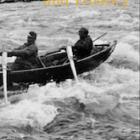Tornlund, Erik, and Lars Ostlund. “Floating Timber in Northern Sweden: The Construction of Floatways and Transformation of Rivers.” Environment and History 8, no. 1 (Feb., 2002): 85–106. doi:10.3197/096734002129342611. The development of the export-oriented forest industry played an essential role in the industrialisation of Sweden at the end of the nineteenth century. A very important factor was the available watercourses: these could be used to transport timber from inland forests to the sawmills on the coast. The aim of this study is to analyse the transformation of one river in boreal Sweden, the Vindelalven, during 1820–1945, caused by the introduction of large scale floating of timber. The most prominent feature of this development was the exploitation of a landscape without any industrial infrastructure. Production volumes and the scale of production within the forest industry increased radically from the mid-nineteenth century and transformed the landscape of both the forests and the rivers. The transformation of this natural watercourse, by building different kinds of floatway structures and dramatically changing the flow of water, can be divided into four characteristic periods: i) 1820–1850, ii) 1850–1900, iii) 1900–1945, and iv) from 1945 to the end of the log driving era in Vindelalven in 1976. The many different activities and the lengthy time period have resulted in a fundamental transformation of the river and its ecological characteristics, and have therefore left an almost indelible imprint on the river Vindelalven. All rights reserved. © 2002 The White Horse Press
"Floating Timber in Northern Sweden: The Construction of Floatways and Transformation of Rivers"
Tornlund, Erik, and Lars Ostlund | from Multimedia Library Collection:
Environment and History (journal)


